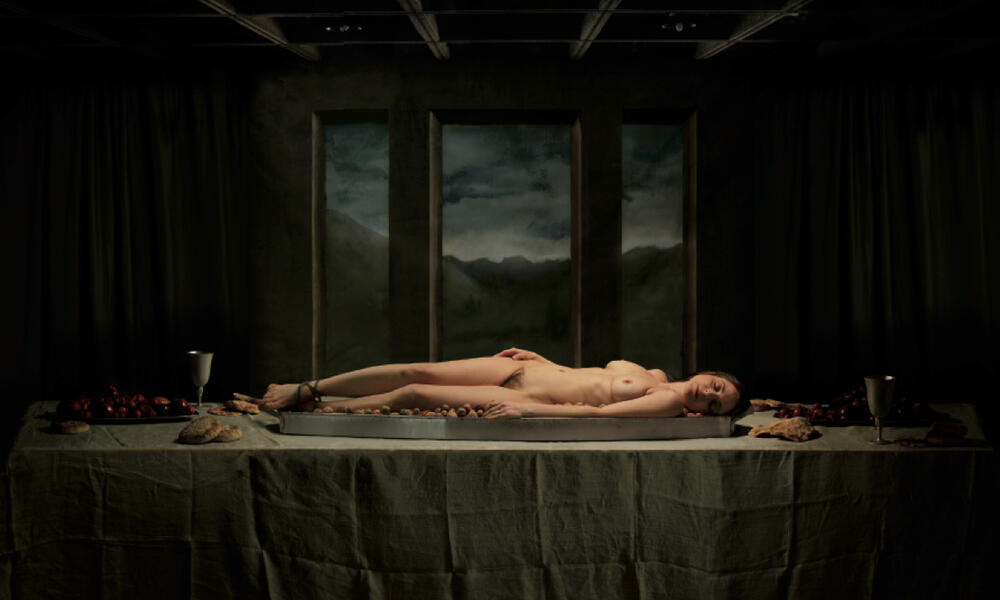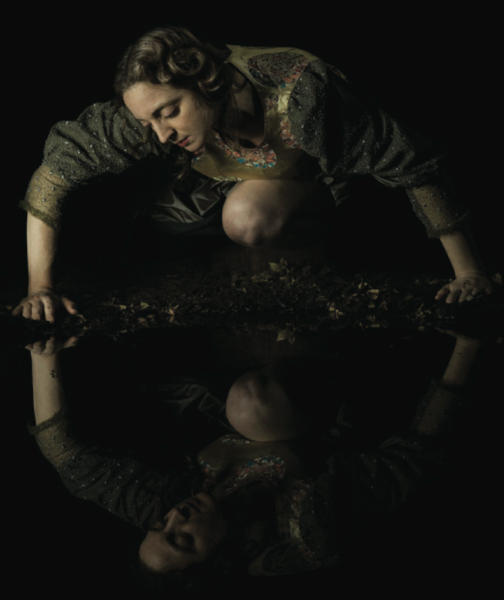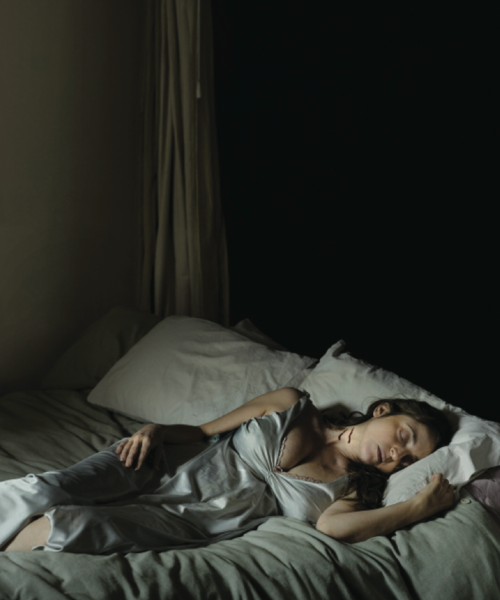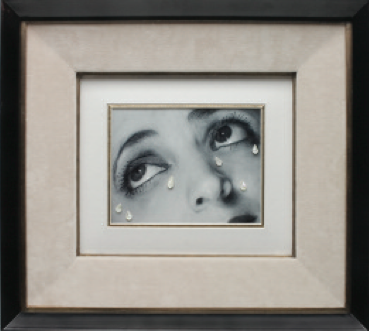Nicola Costantino
The Seduction of Violence
With the strength of an atavism that brings intense emotions to the imaginary of contemporary art, the violence that pervades the history of Argentina seems to resurface in the work of artist Nicola Costantino. Meat, a symbolic product and a wealth generator par excellence in a country where rites are maintained with an almost religious devotion, bears the mark of violence and is the central motif in the work of Costantino. Food, the body used as a weapon of seduction, human hair and skin and the flesh of animals, are themes that hide – in an almost subversive way and conveyed through a polished language – the special influence that our barbarian traditions have on her.

Our artist does not buy Winsor & Newton paint tubes or fine mink hair brushes in the shops that her colleagues frequent; she seeks the materials she uses in the execution of her works in butchers’ shops. Such is the provenance of the animals that, after a complex process, acquire sculptural qualities or, occasionally, those of a jewel. Attraction, revulsion, and reflection, in that order and in doses that vary in relation to the viewer’s sensibility, are the responses that her work usually elicits. The Hog-Balls are plated metal or resin balls reproducing the skin, head and hoofs of hogs – sometimes hog fetuses – skinned, folded up and forced under high pressure into a spherical mold to achieve, through a die- casting process, exact reproductions of the animal. Of variable dimensions, the balls boast a highly refined finish; they have the appearance of a Cartier “must” in the neutral spaces of the exhibition halls, and they must be observed in detail to discern their violent content. Only then may they be associated to one of the “gaucho-like forms” of execution described by Sarmiento when he points out: (...) “They placed their enemies ‘in a straight- jacket’, that is, they wrapped them in a covering of fresh hide, sewed it up, and left them abandoned in the fields.” There is no doubt that the vast and monotonous territory of the pampas was particularly propitious to scatter those compressed human bodies around with criminal indifference. Small bundles in the landscape that Costantino’s impeccable products now evoke.
Barbaric, the artist’s work acquires an aesthetic sophistication that our coarse ancestors would envy. For there are abundant antecedents documenting the desire for elegance present in gaucho practices. In the story Poncho de verano (Summer Poncho), Roberto Payró establishes a cruel parallel between the making of an haute couture model and the torment that consisted in wrapping the victim in a fresh cow hide with the hair side turned inward, so that when it dried and shrunk it would cause death by asphyxia. “Nice, fresh summer poncho!” the executioner exclaims, in a perverse flirtation with fashion.
In her friezes, Costantino displays violence plainly; she unveils a holocaust that glides along pipelines: fetal foals, lambs and pigs that accumulate at every bend. The sculpture ensembles, exact replicas of life-size dead animals, become, due to their delicate appearance and lability, a metaphor for human victims. René Girard points out that sacrifice fulfills a function in society; he remarks that it protects it from its own violence, it placates it and diverts it by leading to a partial satisfaction of instinct, and he specifies that (...) “In order to offer to the appetite for violence a nourishment that it fancies, all the victims, even animal victims, must resemble those they substitute.” Costantino reflects on her work and she compares it to the routine tasks performed in the Argentine countryside, where viscera and meat are manipulated naturally and with a butcher’s ability. And Rodolfo Kusch, the author of La seducción de la barbarie (The Seduction of Barbarism) assigns to this feeling the attraction that barbarism exerts; the power to bring forth a violence that becomes negative because it is clandestine.
Precisely, in the content of the pipes that cross the surface of her walls, the artist makes transversal cuts with surgical precision and shows up the routine of getting rid of that which a vain consumer society finds intolerable. But suturing distances between civilization and barbarism, she balances the brutality of the image and the pure lines of architecture. The elegant curves and the design of the pipes intended for the provision of comfort, endow the work with an ornamental beauty that reflects the aestheticizing obsession of our time. The neutral color of the wall coincides with the tone of death; it is pale as the animal fetuses intertwined in their grave of synthetic resin. Death is also present in the series of machines that replicate the movements of some colts that move like ghosts. The flesh has disappeared; only the abstracted movement remains. The aberrant, the ominous, masked under a beautiful appearance, engender forms that combine what is presented as conflicting: civilization and barbarism are not presented as an alternative in the works; rather, they are resolved as a whole.
* Sophistication and barbarism
In the objects and installations, the attraction derived from their sophisticated elaboration coincides with the repulsion that the material used by the artist arouses: dead animals, human hair, and the reproduction of human skin. Elegant dresses, jackets, pants and accessories made of silicon with prints in relief inspire fascination due to their ornamental value, and they have the appearance of high- level consumer products. The models that wear her clothes convey certain excitement; they show the so-called “heart of time.”
The peak of sensuality is reached by a small corset with two man’s nipples in the exact place that corresponds to a woman’s nipples. The placement of the nipples tenses the limit between the body that can be imagined and the dress that reveals it, exalts the voluptuousness of both and loads them with eroticism. It is a trompe l’oeil, a sorceress’ play.
In her sumptuous packaging for dead animals, or in the chain of chickens, linked to one another through their natural orifices and recreating a Gucci model, the trap is reiterated: the charming appearance conceals the violent content. But all that is fatuous in this body of work is counterbalanced by an intense meaning: its dark and occult sense.
Costantino’s art can be envisaged as a critique of consumerism, although if so, it is a covert critique. The artist partakes of the system; she constructs her oeuvre in the very heart of the system; she uses the same tools and manipulates the appearance that arouses desire. She is familiar with the most intimate secrets of consumer culture. In Savon de corp, a series of 100 torso-shaped soap bars presented in pretty soap dishes are accompanied by the advertising slogan: “Prends ton bain avec moi” (Take your bath with me). Beyond the glamorous images that accompany the work, the issue is the aberration of the content: the soap bars contain a percentage of human fat, represented by the adipose tissue of the artist, who underwent a plastic surgery (liposuction) to produce them.
Like Bret Easton Ellis, author of the novel American Psycho, who narrates the story of a serial killer that is a fan of trademarks, Costantino establishes a disturbing relationship between the unbridled incitation to consumerism and violence, and she denounces the schizophrenia induced by the double entendre of aesthetization and dehumanization. The writer contributes to interpret the status of Costantino’s objects, which might well swell the list of products that satisfy top consumers, but which are also substitutes of a profound and vital satisfaction, fatally rooted in barbarism.
*Theatricality
In recent years, Costantino has, as a consummate actress, played the part of different art-world personages, and has posed for their self- portraits. Endowed with a versatility that renders her an excellent interpreter of different psychological prototypes, the artist takes possession of Man Rays characters; she becomes Edward Steichen’s mysterious Gloria Swanson, the dead Ophelia, and the expectant young girl painted by the German artist Gerhard Richter. She is Argentine artist Antonio Berni’s La mujer del sweater rojo (The Woman in the Red Sweater), lost in thought and melancholy, with her head resting on her hand, unaware of the world around her, and she is also Nicola, splitting through her bloody fantasy into the trilogy that portrays her death.
La cena (The Supper) is the photograph and the video of a performance. The image, which unfolds like an altarpiece and reveals Costantino’s naked body on a platter, is filled with pictorial resonances from the past. This recumbent figure lit up like a Vermeer and utilized as incarnation of and metaphor for art, opens up to the most diverse readings, ranging from sacrifice to the delight of the senses.





